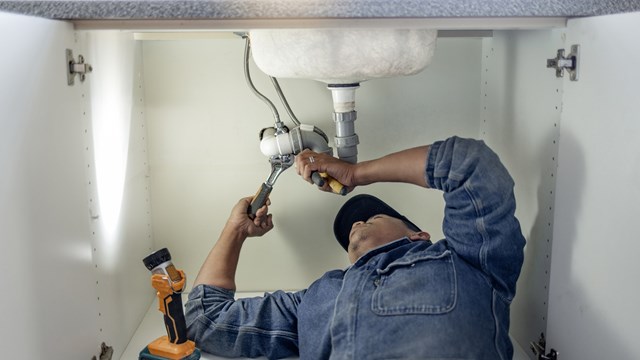Most people go about their days paying little attention to the labor performed by those who make their lives easier. From transit workers to service employees to government officials, how often does one stop to thank the people making everything run along smoothly? Staffs of condominiums, cooperatives, and homeowners’ associations are no exception. Sure, they are compensated for their services, but a regular paycheck is only the most tangible form of appreciation.
So how can your community and administrators really show appreciation for hard jobs done well? Bonuses? Amenities? Parties? Hugs? Possibly! Aside from paychecks, there are plenty of ways to ensure that your staff enjoys coming to work. And while goodwill is, well, good – from a pragmatic point of view, a happy employee is one who is both more productive and less likely to leave, thereby saving your board or management the difficulty of screening a replacement.
Basic Benevolence
According to management pros, bolstering one’s employees over the course of the year shouldn’t be viewed as a burden, or an afterthought; noticeably content employees radiate that good vibe outward, brightening the days of residents and visitors alike.
“A positive customer service experience can reflect a professional image and give a good first impression of the entire building, which can be a true deciding factor in selecting a place to live,” says Steven Hirsch, executive managing director of FirstService Residential in New York. “For this reason, our organization offers customer service training built around a proven hospitality program free of charge for each of our managed properties. The program has been created primarily for front-of-house staff, but we encourage all staff members to receive the training, because each of them engages with residents and guests in some manner at any given time.”
Another way buildings and associations can accommodate their staff is by allowing a certain amount of flexibility when it comes to working hours. A rigid 9-to-5 (or to be more realistic, 9-to-6) workday makes sense for some positions, but for others – those where there is no practical reason that the job cannot be performed thoroughly during different hours – a little flexibility can go a long way toward a more engaged, productive and positive employer/employee dynamic.
“Having an employee work a ‘flextime’ position is a benefit to both the community and the employee,” says John Kadim, a portfolio property manager with Thayer & Associates, Inc. AMO, in Cambridge, Massachusetts. “From maintenance employee to on-site administrator to any other position within the community, jobs can be both demanding and exhausting. Offering flexibility can prevent accelerated burnout. I typically set specific days and times where an employee is needed, and let the rest become flexible, within specific parameters.
“To provide an example,” he continues, “I may tell a maintenance employee that trash is picked up three times per week, and that they need to be on-site at 8 a.m. on Mondays, Wednesdays, and Fridays to facilitate that. If they want to come in later on Tuesdays and Thursdays, they can do so, but they still need to work the number of hours set weekly, and there may be a limit as to how late they can stay. This way, there are still controls in place so the board and manager both know when they can expect the employee to be on-site, but the employee feels that they have more control as to when they work, and can schedule personal appointments around that, instead of taking time off for necessities. Because when employees do have to take that time off, it’s the community that loses out on those few hours of work.”
When an association employs union workers, there are certain tasks that fall outside those laborers’ scope of work. Should homeowners need those services performed, workers may be willing to accommodate, but it certainly helps to throw a little something extra their way.
“Seasonally installing and removing window air conditioners is an example of this type of job,” says Richard Holtzman, president of Prairie Shores Property Management, LLC, in Chicago. “We set up a fund through which homeowners requesting this service pay a specified fee that has been approved by the board, and then those funds are given to the employees for doing that work.”
Residential Development
Encouraging and enabling employees to learn and grow professionally is a great way for a board or management to show that they’re invested in the evolution of those employees within the association. As Hirsch indicates, the hiring of third-party trainers who focus on professional development in areas of customer service, resident relations, emergency management, and more can help strengthen a building’s staff.
“More and more organizations offer facilities maintenance education programs,” notes Kadim. “Some lead to specific certifications, while others provide a broad overview of building maintenance. All are geared towards different skill levels, so it is important to go over the content of the course to determine the right fit for an individual employee.
“For on-site managers, I generally recommend the M-100 course through the Community Associations Institute (CAI), as that is the best introductory course which I have seen that really introduces a majority of the elements of community association management,” he continues. “After any continued education program, the employee generally has more confidence in their performance of daily tasks, as they feel that they have been equipped with the information they need to be successful. This in turn contributes to the success of the community.”
Perks of Performance
Of course, there are many ways outside of general managerial flexibility to sweeten the pot for employees. Hirsch provides several such suggestions for boards and managers looking to put a skip in a staffer’s step:
“One of our buildings treated their staff members to a paintball outing, which also served as a team-building exercise. Another holds a monthly luncheon where staffers are acknowledged for their hard work, and specific staff members are recognized as ‘Employee of the Month’ or ‘Employee of the Quarter,’ with a gift certificate or something similar to show appreciation. At [year’s] end, all employees who have won the award throughout the year are acknowledged in a special event which their spouse and/or family members are invited to attend. Yet another property provides the building staff with complimentary membership to the local gym, and cake on each of their birthdays.”
While those gestures trend larger, there are more subtle things an association can do that will be no less appreciated. Holtzman suggests – where resources and space are available – establishing a break room with locker space for staff members to safely store personal items during their shift, free water, or free vending machines with soft drinks and snacks.
Finally, Hirsch notes that one of his properties provides free Wi-Fi in their staff locker room and lounge area. Another allows employees to use the association’s community room, even treating them to dinners when they work long hours. And another still simply recognizes outstanding effort with a personal “thank you” note from the board president – which can go a long way, says Steven J. Weil, president of Royale Management Services, Inc., in Fort Lauderdale. “Truthfully,” he adds, “the trouble with association employees is that everyone beats up on them when something goes wrong, but people rarely notice and say ‘thanks’ when things are operating smoothly.”
Happy Holidays
For associations that have slacked in their worker appreciation for much of the year, holidays are a great chance to play catch-up. It’s not that employees are necessarily expecting something on these celebrated occasions, but especially come year-end, gestures are quite likely to be remembered fondly.
“Holiday time is a vital opportunity to let employees know how their hard work and dedicated hours are appreciated,” urges Holtzman. “We try to organize a building-wide holiday fund. Different associations have different procedures that they follow. Some want to gently nudge homeowners to contribute, while others specifically recommend how much owners should pitch in. Then the board decides how that fund is distributed; what percentage to what employee. It’s typically based on tenure.
“Some of our clients are quite generous,” he continues. “They’ll give employees an extra month’s pay. Others have IRAs set up for union employees, and they contribute to that. There are all sorts of imaginative ways to make employees feel appreciated.” In many cases, holiday bonuses are arranged directly between the owners. “Employees appreciate that, because something arranged independently in that fashion most likely isn’t going to wind up on anybody’s tax returns,” says Weil. “Just cash with a card that says thank you.”
Hirsch has buildings that purchase turkeys for each staff member for Thanksgiving. And of course, the annual holiday party is a staple of both community and professional organizations. Why not unite both, and invite hard-working staffers to the association get-together?
While it may seem as if employees are just eager and thankful to have a job, the truth is that most steadily employed Americans are lacking in money, time, and even sheer morale. Going the extra mile in any or all of these areas can work wonders on an association, as a happy staff leads to happy residents, all of which will make the board’s endeavor easier, at the end of the day.
Mike Odenthal is a staff writer/reporter for The South Florida Cooperator.







Leave a Comment